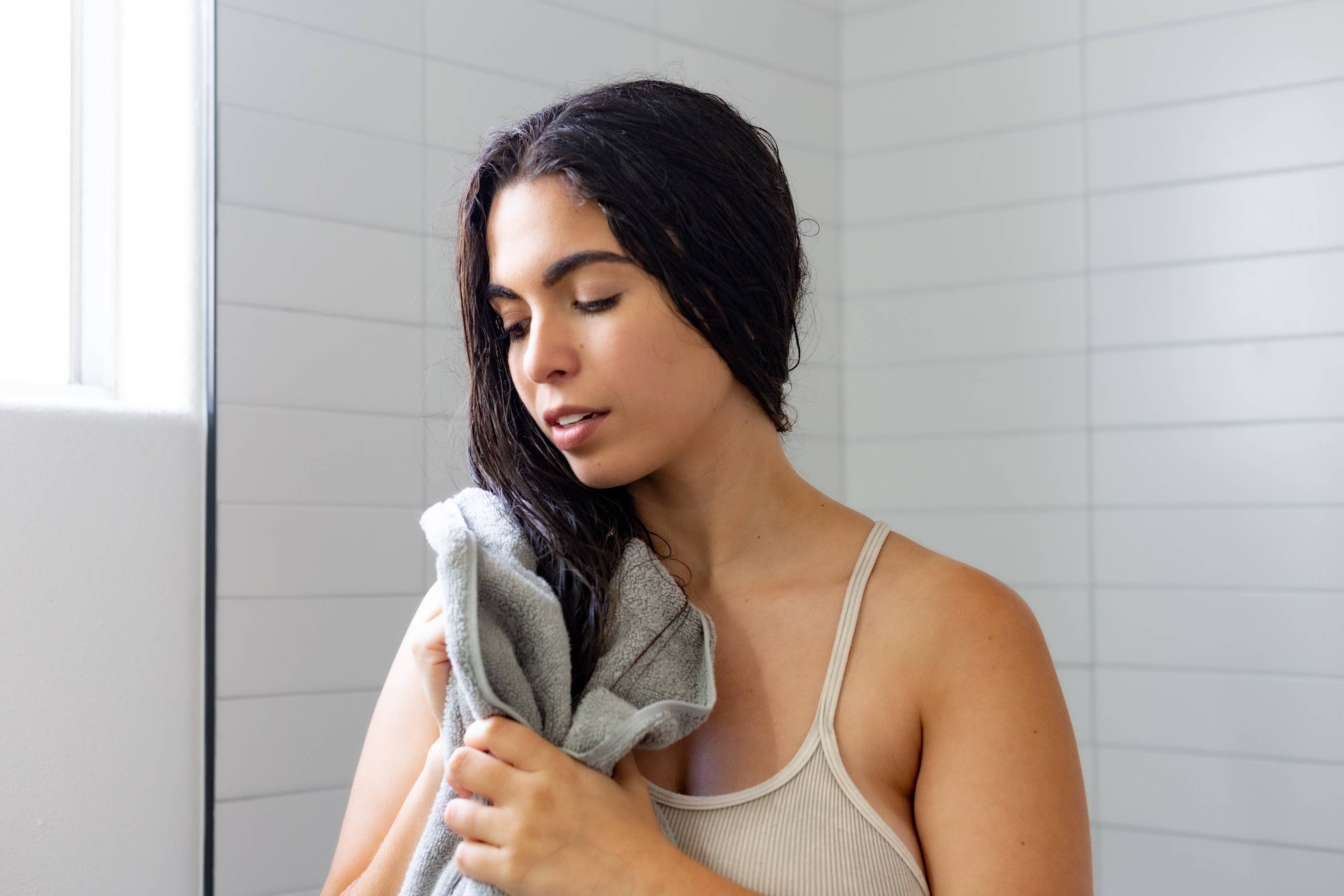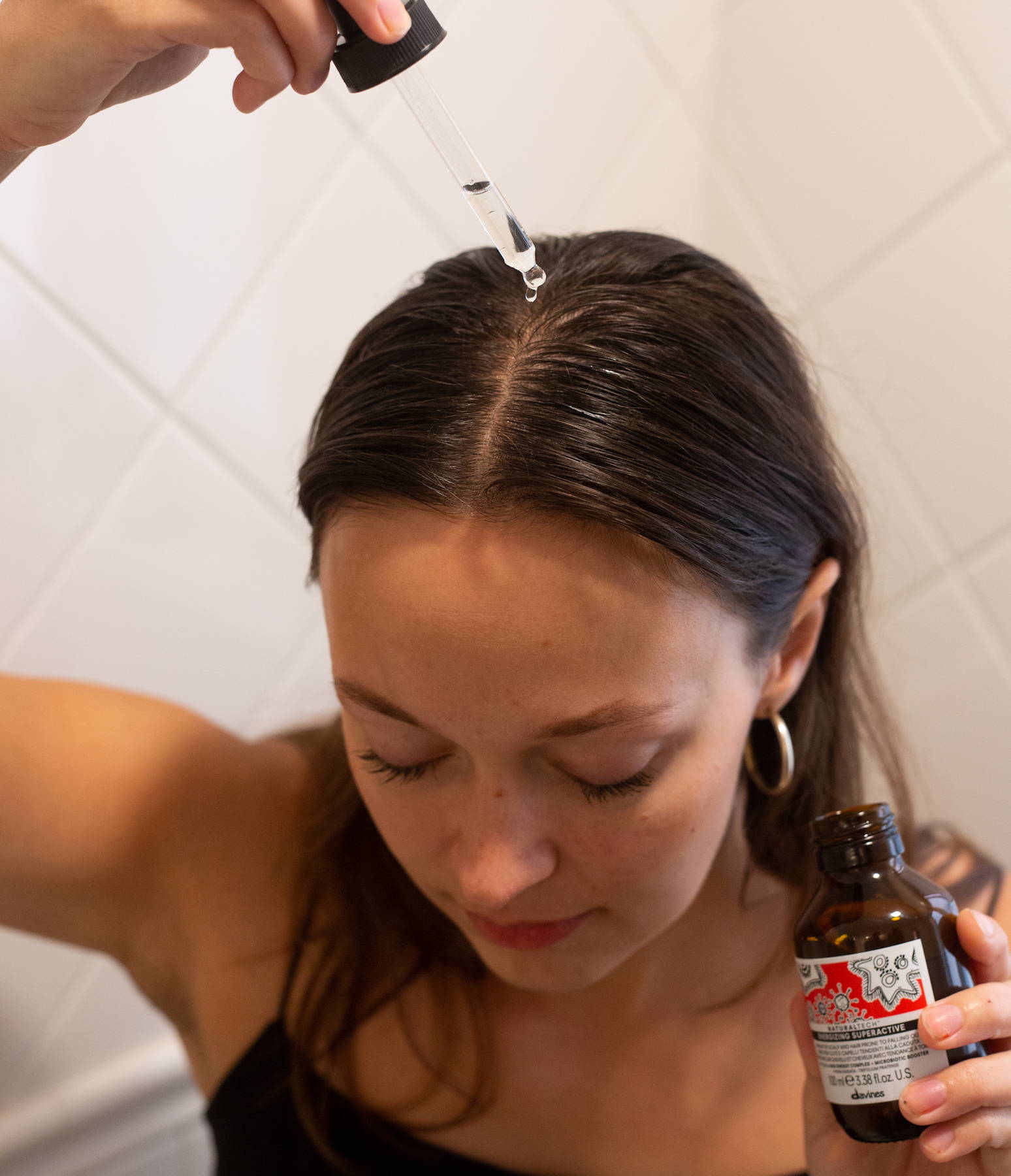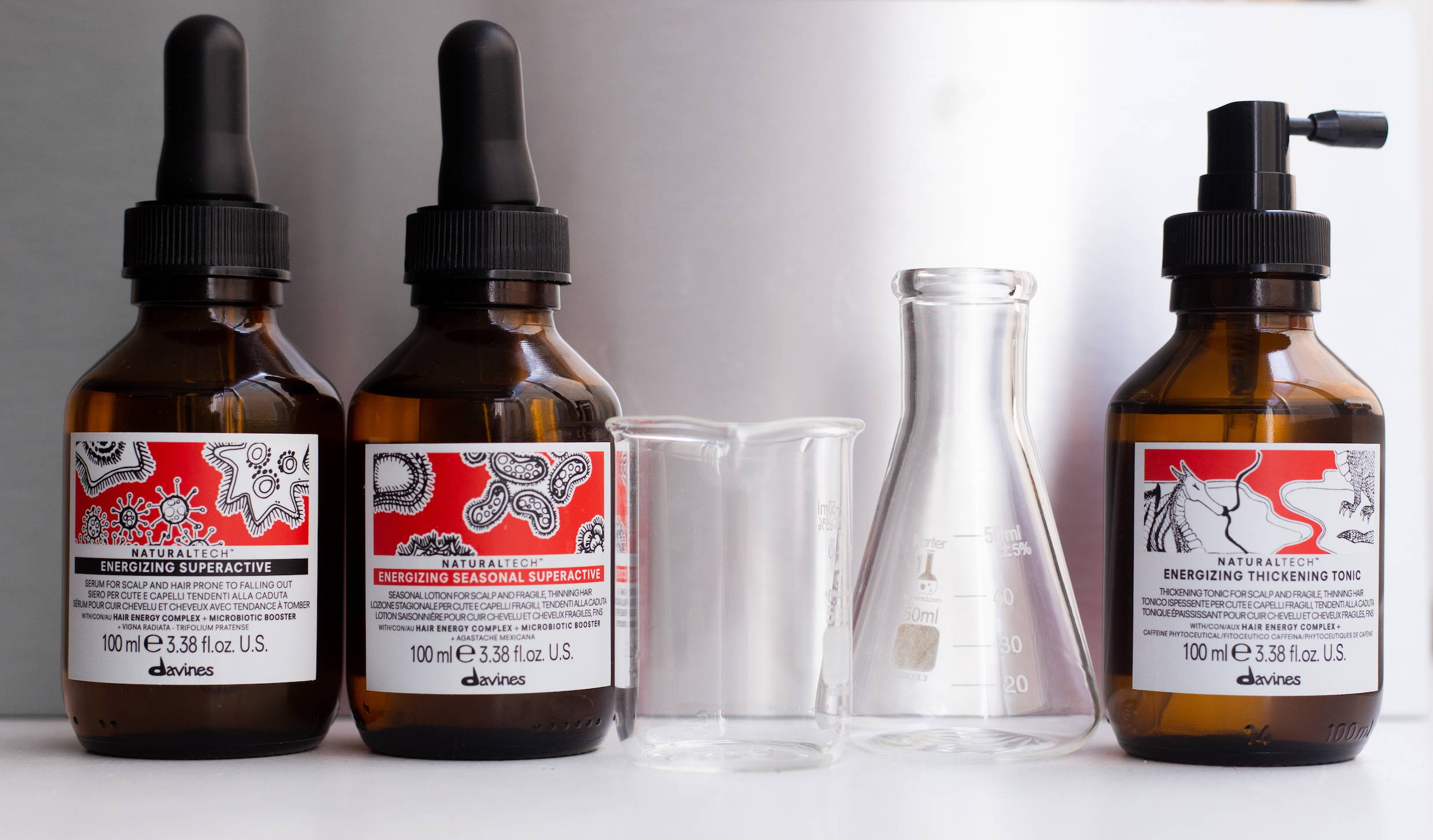Free Carbon Neutral Shipping On Orders $75+, Plus Free Samples!
Buy Now and Pay Later in 4-interest free installments with Klarna
Free Carbon Neutral Shipping On Orders $75+, Plus Free Samples!
Buy Now and Pay Later in 4-interest free installments with Klarna
Rendre la beauté durable
We Are Circular
Lien vers vos collections, vos ventes et même des liens externes.
Refer Your Friends and Get a Free Gift!
Hair shedding is a part of everyday life. In fact it’s normal to shed up to 100 strands per day. But if you’re losing clumps of hair at a time, have bald patches or a receding hairline, you’re likely experiencing hair loss. Lots of things can cause your hair to fall out and in order to stop it, you’ve got to get to the root of the problem — literally! If you’re wondering how much hair loss is normal we’re breaking down the most common causes of shedding hair ahead. Read on to understand why you’re experiencing hair loss and what to do about it.

Hair loss can affect just the scalp or the entire body, and it can be temporary or permanent. So what causes hair shedding? As it turns out, lots of things. And getting to the bottom of your hair loss is the first step in treating it. The following are some of the most common reasons for hair loss and hair shedding.
Hormones play a huge role in regulating the hair growth cycle. So anything that sends your hormones out of whack can lead to hair loss. This includes the hormonal changes that occur during peri-menopause, menopause and post-partum.
People as young as age 30 can experience hair loss of 10 to 15 percent. By age 50, it goes up to 25 percent and by age 70 it’s at 50 percent. As we age, the scalp becomes drier and tighter, affecting blood circulation to the scalp and the growth of your hair follicles. So with aging comes a natural progression of hair loss.
Nutritional deficiencies can take a toll on your entire body and this includes your hair. Deficiencies in nutrients like iron, copper, zinc, Vitamin B12 and protein can cause excessive hair shedding and hair loss. Similarly, dramatic weight loss and restrictive diets have been linked to acute telogen effluvium, one of the most common causes of widespread hair loss on the scalp.
Certain medical conditions can also lead to hair loss. People with Lupus, Hashimoto thyroiditis (hypothyroidism), autoimmune diseases, Grave’s disease, (hyperthyroidism), and diabetes will often experience hair loss. Hair loss is also one of the common side effects of many medications, including chemotherapy, high blood pressure medicine, blood thinners, beta-blockers, oral retinoids, and thyroid medications.
One of the most common causes of hair loss is anemia. This is a condition in which the body lacks enough healthy red blood cells to carry adequate oxygen to the body's tissues. Anemia signs and symptoms vary depending on the cause and severity, although hair loss is often experienced.
Hyperthyroidism is an overactive thyroid (when it produces too much thyroid hormone). Hypothyroidism is an under-active thyroid (when it does not produce enough). Hypothyroidism is more common than hyperthyroidism. Although the two conditions have different signs and symptoms, sometimes they overlap. Any thyroid imbalance can affect the hair follicles, so hair loss can happen in both types of thyroid disease. Plus, if hypothyroidism is left untreated it can result in anemia, which we just discussed can impact hair loss.
Any type of physical or emotional stress can lead to loss, though you may not experience it until 3 to 5 months later. Stressful events send hairs into a degenerative phase where they are rapidly shed. This is known as sudden hair loss. It is often accompanied by a sensitive scalp and occurs quickly and all at once.

If the part in your hair is widening, you find bald spots, or you notice excessive daily hair shedding for longer than 3 months, see a dermatologist or trichologist to rule out underlying factors that need to be addressed. To determine the cause of your hair loss, your doctor will examine your scalp to check for inflammation, redness, sores, or scarring. They’ll look closely at your hair to determine how much is being lost, the pattern of the hair loss, and whether there is hair breakage. Your doctor will also ask questions about when the hair loss began, what the patterns of hair loss are, what kind of hairstyles you usually wear, whether hair loss runs in your family, and other details about your symptoms to determine the best course of action for your treatment.
The goal of treating hair loss is to encourage the hair follicles to function to the best of their ability, encouraging hair growth. If you’re wondering how to stop your hair from falling out, these are the best ways to do it.
Hair is made up of protein, so if you’re not getting enough of it, your hair will suffer. Getting an appropriate amount of protein in your diet is essential for strong and healthy hair growth. Vegans and vegetarians experiencing hair loss are likely lacking the amino acids in the form of animal-protein and may need to supplement with extra plant proteins.
In addition to the foods in your diet, increasing your vitamin and mineral intake will help strengthen your hair from the inside. Supplements like iron, Vitamin C, Vitamin B12, Vitamin D3, copper, zinc, selenium, essential amino acids like L-Lysine and L-Methionine and hair vitamins, which usually contain biotin and collagen help combat hair loss.

Platelet-rich plasma, PRP is a scalp therapy that requires a patient to draw blood so enriched cells can later be injected back into the scalp. PRP can stimulate the growth of follicles, reversing hair loss and must be done by a professional. Less invasive hair treatments include manual exfoliation with a sea salt scrub cleanser or a follicle-stimulating product like a gel for thinning hair.
Carbs provide your hair with the energy it needs to grow. So if your diet doesn’t include carbs and you’re experiencing excessive hair shedding, it’s time to add them. Add healthy carbohydrates like fresh fruit, or whole wheat crackers in between meals that are longer than four hours apart — the energy available to your hair cells drops after this amount of time.
Exercise can help with hair growth because it increases blood flow and circulation throughout the body. An increase in blood flow means that more nutrients and oxygen are reaching the scalp. Keep your hair follicles nourished and healthy by doing 30 minutes of cardio at least three times a week.
Over-processing and over-styling your hair can weaken your strands, resulting in damage. This includes using heat, wearing tight hairstyles and choosing your styling products for hair loss wisely.
Onion juice is thought to help with hair regrowth by rejuvenating the hair follicles. Boil water and a chopped, medium onion for 10 minutes. Let it cool, then strain it and add some honey to thicken it. Apply the solution to your dry scalp and leave it under a shower cap for two hours. Rinse it out with a mixture of water and apple cider vinegar to neutralize the odor Or try a head massage with an energizing oil like our serum for thinning hair. Apply a small amount to your fingertips. Apply light to medium pressure with your fingers while gently massaging your scalp in small circular motions. Keep massaging for three to five minutes, working your way up and around the head, making sure to cover all areas.
No matter how you choose to combat hair loss, rest assured that all Davines formulas are free of harmful toxins and made from natural ingredients. Our products are made with renewable energy and packaging that minimizes the environmental impact. Our hair care isn’t just good for your hair, it’s good for the planet.
by Jaclyn LaBadia, featured contributor
Photos by @goldandglowco
S’abonner pour rester à l’affut des ventes et promotions, les lancements de nouveaux produits et bien plus…
Abonnez-vous à notre newsletter pour bénificier de la livraison gratuite sur votre première commande.
La soumission de ce formulaire confirme que vous acceptez de recevoir les avis de lancement, les promotions et les nouvelles marketing de Davines North America Inc. par courriel.



Laisser un commentaire
Les commentaires sont approuvés avant leur publication.